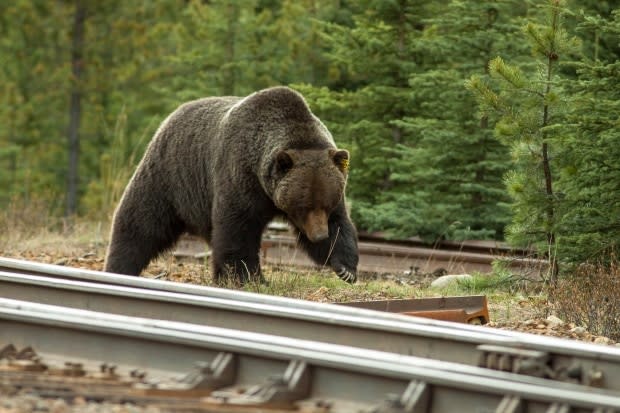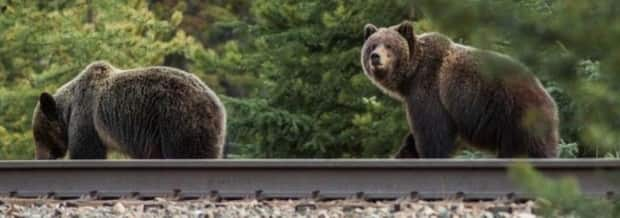Warning system can reduce wildlife killed by trains, research finds
Researchers at the University of Alberta have determined a warning system can help reduce the number of wild animals— in particular grizzly bears — killed by trains in national parks.
The finding was made after several years of research done by a team led by Colleen Cassady St. Clair, an ecologist and biology professor at the university.
Parks Canada and Canadian Pacific Railway officials began to see grizzly bears being killed by trains in Banff National Park in 2000.
As many as 21 grizzly bears have been killed by trains since that time, Cassady St. Clair said Wednesday. That's a significant number, considering the park's grizzly bear population is about 60, she said.
Grizzlies were declared a threatened species under the Alberta Wildlife Act in 2010.

Parks Canada and CP teamed up to provide money for research into ways to prevent grizzly bear-train collisions and Cassady St. Clair and her team began their work in 2011.
Their research determined many factors attract bears to railway corridors.
"A leading hunch of the problem was that grains spilled from hopper cars was the reason bears were on the railway and while they were foraging on it, not looking around, they were vulnerable to being struck by trains," Cassady St. Clair said.
But their research did not find a correlation between the places where grain is most spilled and strikes on bears, she said.
They found many factors attracted bears to tracks including nearby berry bushes, concentrated deer and elk populations and the convenient corridor that tracks provide through the landscape.
"So we shifted gears a little bit and wondered whether instead of trying to prevent bears and other wildlife from accessing the railway, if we could try to increase their ability to detect and avoid trains," Cassady St. Clair said.

A warning system, similar to what's used at railway crossings for people in vehicles, was developed by PhD student Jonathan Backs.
"A bell rings and a light flashes when a train is about 30 seconds away," Cassady St. Clair said. "The warning only goes off when a train is approaching."
Preliminary results suggest the warning system does cause animals, not just bears, to leave the track a few seconds earlier than they otherwise would, she said.
"It's not a panacea, it won't solve the problem, but for this threatened population of grizzly bears it might reduce mortality enough for the population in the area to remain stable," Cassady St. Clair said.
The concept and technology could be used in other parts of the province, country and around the world where there might be even more severe mortality rates for a species at risk, she said.
"That's our hope, that we've approached the whole project in a way that it can be generalized to other locations and other species," Cassady St. Clair said.
Jasper National Park is not seeing the same problem with grizzly bears being killed by trains, although it does see a large number of deer and elk hit by trains, she said.


